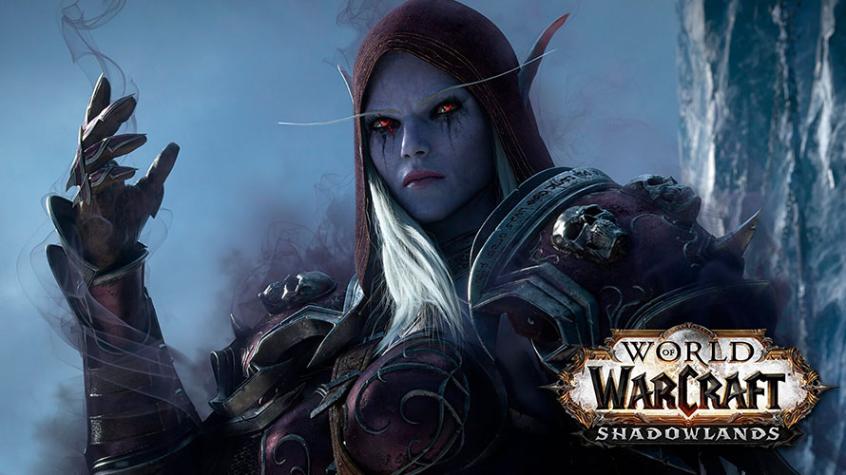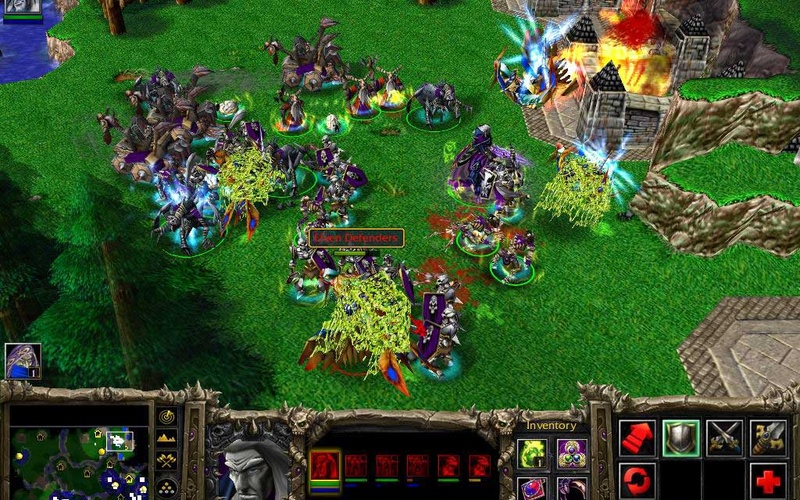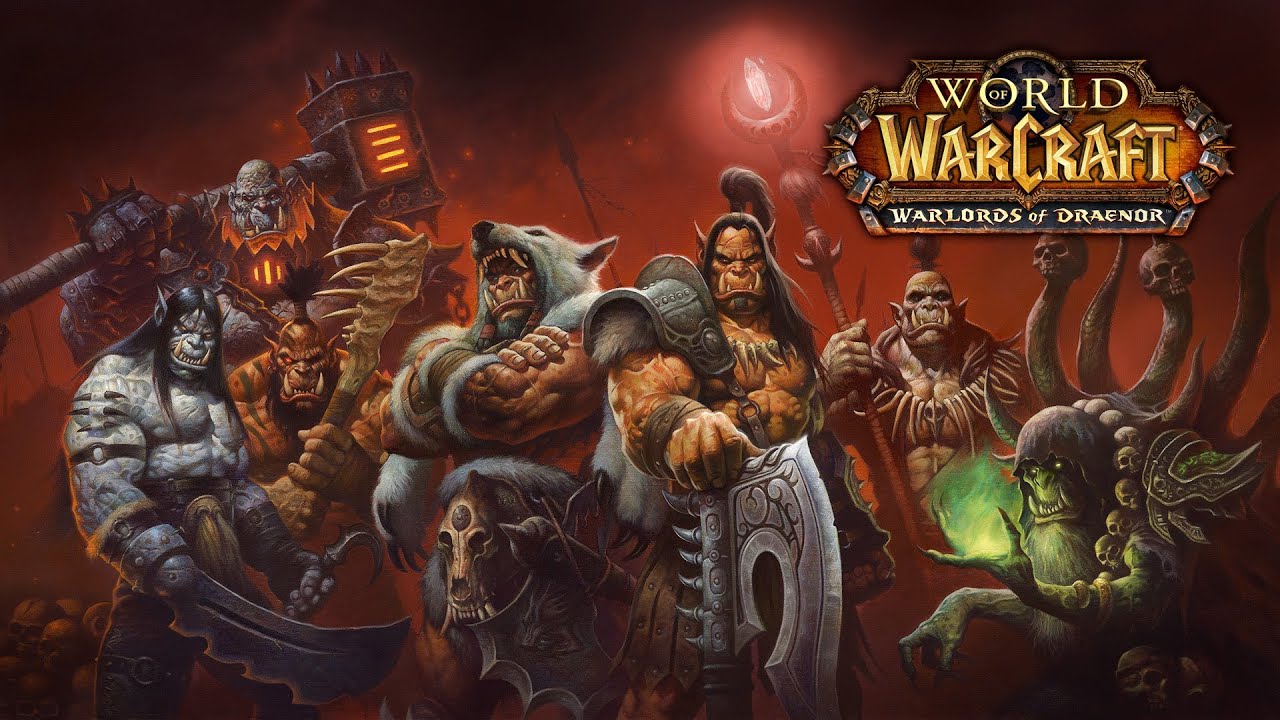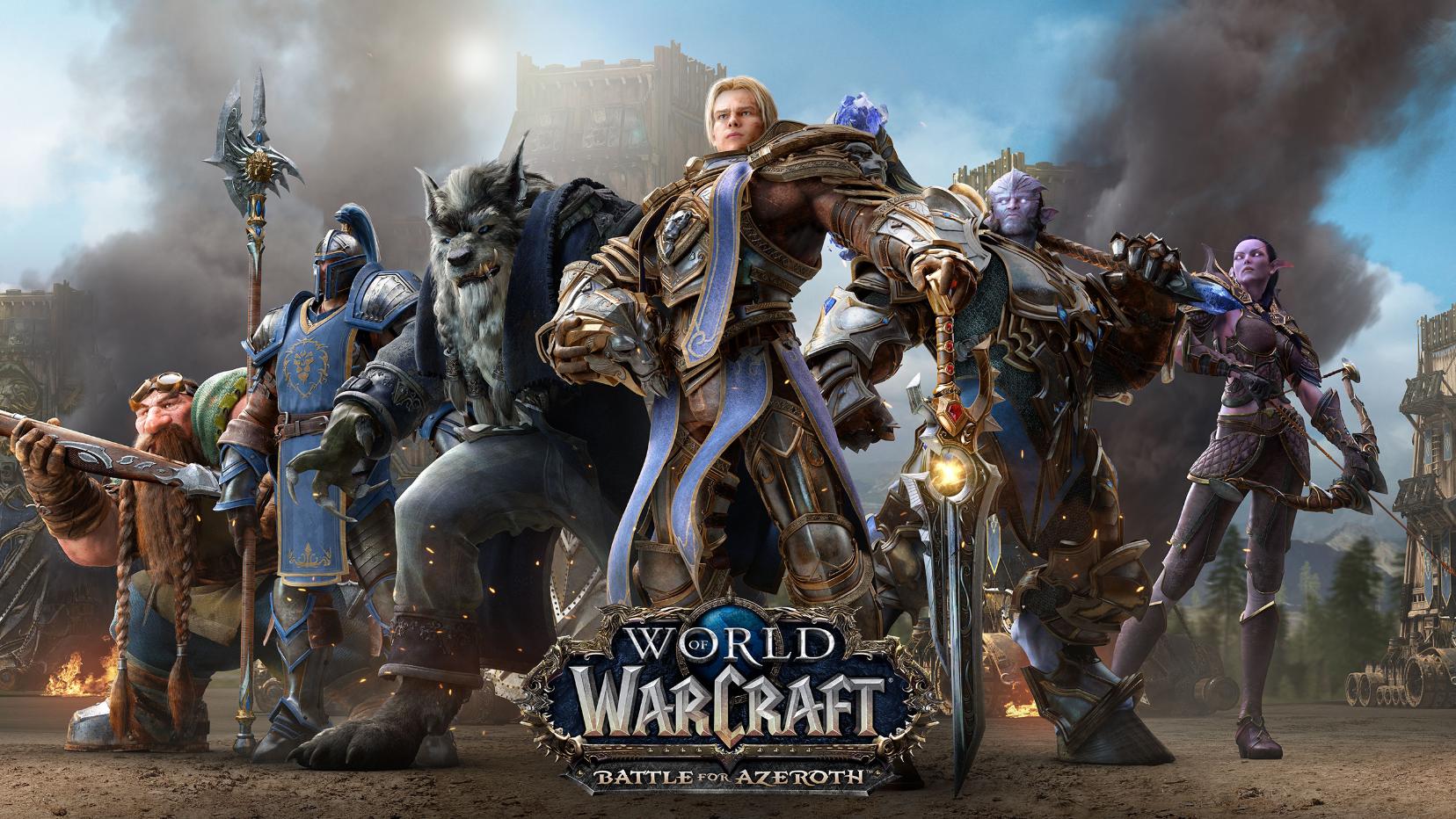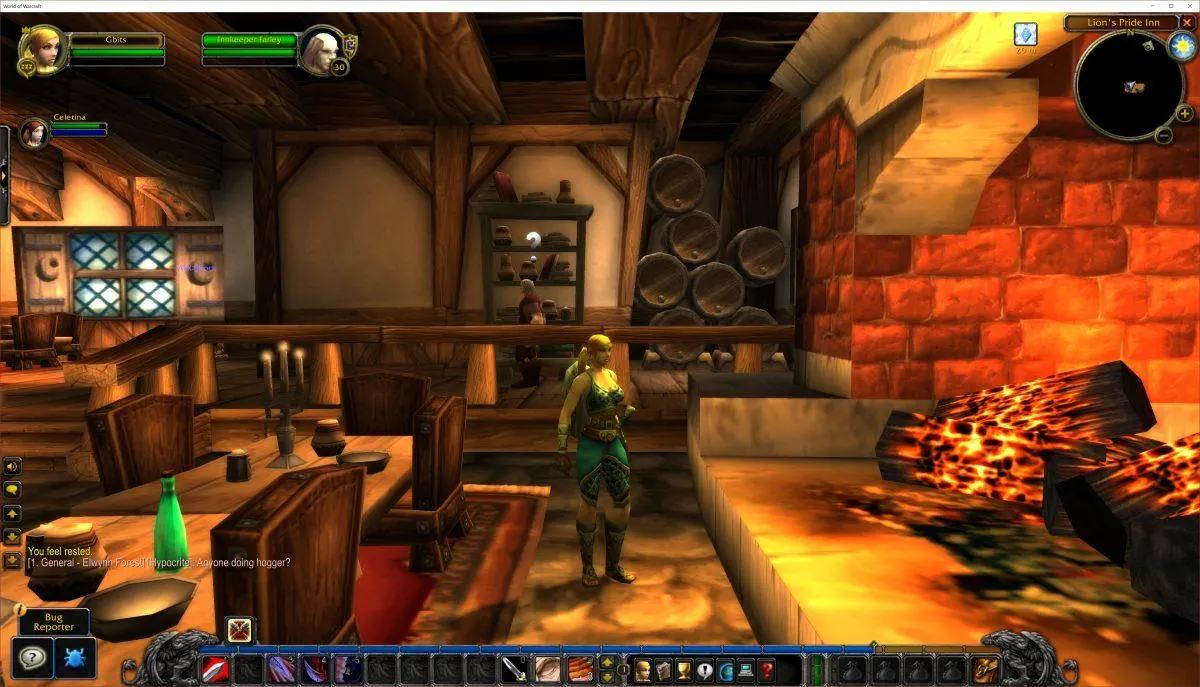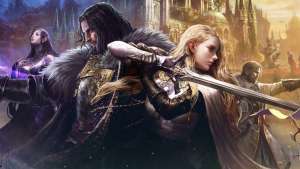The world of Warcraft is as rich as it is vast, a sprawling universe filled with rich lore, intricate politics, and epic conflicts. Before it became a cultural juggernaut, Warcraft began its life as a simple real-time strategy (RTS) game—though “simple” is a word that barely captures the depth of the title. In this article, we will explore the story behind every version of Warcraft, from its origins with Orcs & Humans to the latest titles, tracing the evolution of one of the most influential gaming franchises in history.
The Dawn of Warcraft
Released in 1994, Warcraft: Orcs & Humans was developed by Blizzard Entertainment, a studio that had already made waves in the gaming world with titles like The Lost Vikings and Rock n' Roll Racing. However, Warcraft would be the game that elevated Blizzard to legendary status. The game introduced players to the fantastical world of Azeroth, where the struggle between the Alliance of Humans and the Horde of Orcs takes center stage.
The game's story is one of war, betrayal, and survival, set in a world that was on the brink of destruction. The Orcs, a once-noble race of warriors, are led into Azeroth by the demonic Burning Legion, whose dark magic twists the Orcs into bloodthirsty invaders. The Humans, the stalwart defenders of Azeroth, find themselves thrust into a conflict unlike any they’ve faced before. The game’s central conflict is a battle for control, not only of the land but also of the fate of the world itself.
The Setting: Azeroth and Beyond
The world of Azeroth was initially small in scope, but the foundation was laid for what would eventually become one of the most expansive game universes ever created. The first Warcraft game is set in a region known as the Kingdom of Azeroth, a land once peaceful but now caught in a fierce war between Orcs and Humans.
What makes Warcraft unique, however, is its immersive lore. From the outset, Blizzard didn’t just create a game; they crafted a world. Every unit, every building, and every map was designed with a sense of history. Players could feel the weight of past battles and the anticipation of future wars. The Orcs, depicted as barbaric invaders, were not just mindless villains. They had a culture, a backstory, and motivations that made them more than one-dimensional enemies. Similarly, the Humans were not perfect heroes; they were flawed, and their actions often led to tragic consequences.
One of the defining features of Warcraft was its use of both fantasy and horror elements. The Orcs were not only battling the Humans, but they were also being manipulated by dark forces—forces that would later become central to the Warcraft universe. This blend of epic fantasy and darker, more ominous themes set Warcraft apart from other RTS games of the era, most of which were more focused on traditional military conflicts.
Gameplay: A New Kind of Strategy
At its core, Warcraft: Orcs & Humans was a real-time strategy game, a genre that was still in its infancy. Players controlled armies of units, gathered resources, and built structures—all in real-time. The goal was simple: defeat your opponent by either destroying their base or achieving specific mission objectives.
The game featured two campaigns: one for the Humans and one for the Orcs. Each campaign offered players a different perspective on the war, and each had its own unique set of units, buildings, and strategies. The Humans were more focused on defensive strategies and had access to powerful spellcasters like the Mage and the Priest. The Orcs, on the other hand, were aggressive and heavily reliant on brute force, with units like the Grunt and the Catapult forming the backbone of their armies.
Both sides also had access to powerful heroes, characters with unique abilities that could turn the tide of battle. These heroes were the first of their kind in RTS games, and their inclusion in Warcraft was a pivotal moment in the genre’s evolution. Players had to decide how to balance their forces—whether to rely on sheer numbers or to focus on their heroes’ abilities. This added an extra layer of strategy that made Warcraft stand out from other RTS games.
The game also introduced an intuitive resource system. Players had to gather gold and wood to build units and structures, and managing these resources was a key component of success. Gold was gathered by mining gold mines, while wood was chopped down from forests. This basic economic system would later become a staple of the RTS genre, influencing games like Starcraft and Age of Empires.
A Tale of Two Factions: The Orcs and the Humans
At its heart, Warcraft was a story of two warring factions. The Humans, led by King Llane Wrynn, were a noble, honorable race that had long ruled over the Kingdom of Azeroth. They had a strong military presence and had kept peace across the lands—until the Orcs arrived.
The Orcs, under the leadership of the warchief Blackhand, were fierce warriors who had been corrupted by the Burning Legion. Their arrival in Azeroth was no accident. The Burning Legion, a demonic army bent on destroying Azeroth, had manipulated the Orcs into waging war on the Humans. The Orcs’ goal was not just conquest—it was survival. The demons who controlled them had driven them into a frenzy, and they needed to conquer Azeroth to ensure their own survival.
What makes the story of Warcraft so compelling is that it does not present a simple “good versus evil” narrative. Instead, both sides are shown to have their own motives, and neither side is entirely in the right. The Humans are not innocent victims; they have made mistakes and, in some cases, caused their own downfall. The Orcs, while often brutal and violent, are not entirely to blame for the conflict either. They, too, are pawns in a much larger game.
The Legacy of Warcraft
While Warcraft: Orcs & Humans was just the beginning of the Warcraft saga, its influence cannot be overstated. It set the stage for sequels and spin-offs, including Warcraft II: Tides of Darkness and Warcraft III: Reign of Chaos, which would eventually pave the way for World of Warcraft, one of the most successful MMORPGs of all time.
But the impact of Warcraft: Orcs & Humans goes beyond its sequels. The game’s influence can be seen in nearly every RTS game that followed. The resource management, hero units, and strategic depth introduced in Warcraft became standard features in the genre. In fact, many of the elements we take for granted in RTS games today were pioneered by Warcraft.
Its influence also extended to other genres. The concept of a persistent, evolving world, where players could invest time and energy into building characters and alliances, would eventually become central to the MMORPG genre. Warcraft helped lay the groundwork for games like EverQuest and World of Warcraft, which would redefine online gaming in the years to come.
The World Beyond the Game
Though Warcraft was primarily a strategy game, Blizzard’s investment in the universe extended far beyond the title itself. Over time, the Warcraft universe would expand into novels, comics, and even a feature film. Each of these expanded media projects delved deeper into the lore of Azeroth, exploring the histories of both the Humans and the Orcs, as well as the many other races that inhabit the world. These stories added layers to the Warcraft universe and helped cement its place in the hearts of fans worldwide.
It was through these expansions that characters like Thrall, the Orc Warchief, became iconic figures in the gaming world. Thrall’s rise from a slave to a leader of the Horde would become one of the most memorable character arcs in video game history, and his story would continue to evolve throughout the Warcraft series.
Blizzard also extended the franchise into the world of tabletop gaming, with Warcraft board games and role-playing games, further developing the universe and its characters.
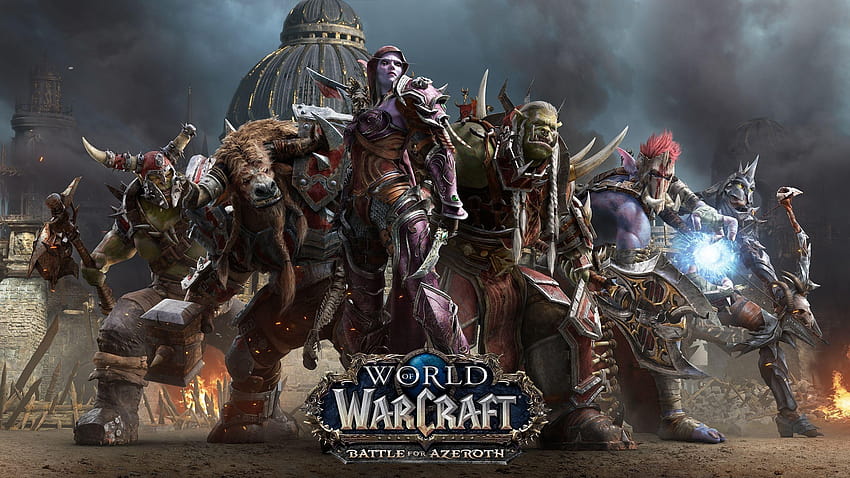
Complete List of Warcraft Games and Versions
1. Warcraft: Orcs & Humans (1994)
The first entry in the Warcraft series, Orcs & Humans was a revolutionary real-time strategy (RTS) game that set the foundation for everything that came after. Developed by Blizzard Entertainment and released in 1994, the game takes place in the world of Azeroth, where two factions—the Human Alliance and the Orcish Horde—are locked in a brutal conflict. The game introduced many of the core elements that would define the Warcraft franchise, including resource management, base-building, and hero units. Players could control either the Humans or the Orcs, each with unique units, abilities, and strategies.
Despite the relatively simple graphics by modern standards, Warcraft: Orcs & Humans was a critical success, praised for its deep strategic gameplay, engaging campaign, and immersive world-building. The game’s story, focused on the invasion of Azeroth by the Orcs (who were being manipulated by demonic forces), set the stage for a long-running saga that would continue across multiple games and genres.
2. Warcraft II: Tides of Darkness (1995)
Released a year after the first game, Warcraft II: Tides of Darkness expanded on its predecessor's gameplay and introduced several new features that would become standard in the RTS genre. Players again took control of either the Orcs or Humans, but this time, the game featured new units and environments, including naval combat and flying units. The story continued the battle for Azeroth, with the Orcs invading through a magical portal, and the Humans fighting back with the help of their allies.
Warcraft II introduced multiplayer modes via LAN and the internet, which was groundbreaking at the time. Its larger maps, enhanced AI, and improved graphics made it an immediate hit. The game's success solidified Blizzard's place as a key player in the RTS market.
In 1996, Warcraft II: Beyond the Dark Portal was released as an expansion, continuing the story of the battle between the Orcs and Humans, with new missions, heroes, and campaigns. The expansion also included the ability to play as the undead, a faction that would play a major role in later Warcraft titles.
3. Warcraft III: Reign of Chaos (2002)
Warcraft III: Reign of Chaos marked a major leap forward for the series, not only in terms of gameplay but also in narrative depth and complexity. Released in 2002, Reign of Chaos introduced a new 3D engine that allowed for more detailed environments, units, and cinematics. The game expanded the playable factions to include the Night Elves and the Undead, both of which had key roles in the game's storyline.
The story of Warcraft III focused on the rise of the Lich King, an undead leader who would later become a central character in World of Warcraft. The game also introduced the concept of hero units, which could level up, gain new abilities, and have a significant impact on the outcome of battles.
In 2003, Warcraft III: The Frozen Throne was released as an expansion, continuing the story and adding new units, campaigns, and a new race: the Naga. The expansion also included new multiplayer modes and a map editor that allowed players to create custom content.
4. World of Warcraft (2004)
Released in 2004, World of Warcraft (WoW) is perhaps the most iconic and influential game in the Warcraft series. WoW took the Warcraft universe into the realm of massively multiplayer online role-playing games (MMORPGs), allowing players to explore Azeroth and interact with others in real time.
WoW was groundbreaking in many ways, offering an expansive, persistent world where players could create characters, undertake quests, join guilds, and engage in both cooperative and competitive play. The game’s success was almost immediate, and it became the gold standard for MMORPGs, growing to over 12 million active subscribers at its peak.
The original release featured the Alliance and Horde factions, with players able to choose from a variety of races and classes, from Humans and Night Elves to Orcs and Trolls. The game also introduced a large-scale PvP system, dungeons, and raids, with challenging content designed for group play.
Since its launch, WoW has received multiple expansions, each adding new content, races, and gameplay mechanics. Expansions like The Burning Crusade, Wrath of the Lich King, and Legion have all continued the game's story while introducing new challenges for players.
5. World of Warcraft: The Burning Crusade (2007)
Released in 2007, The Burning Crusade was the first expansion for World of Warcraft and took players to the shattered world of Outland. This expansion focused on the invasion of the Burning Legion, led by the demonic Illidan Stormrage. The expansion added new races—the Blood Elves for the Horde and the Draenei for the Alliance—and introduced the concept of flying mounts, a new level cap, and the introduction of the Paladin class for the Horde and the Shaman class for the Alliance.
The story centered on the battle against the Burning Legion and the remnants of the Orcish Horde, led by Illidan. The expansion was praised for its exciting new content and dramatic impact on the world of Azeroth.
6. World of Warcraft: Wrath of the Lich King (2008)
Wrath of the Lich King (2008) is one of the most beloved expansions for World of Warcraft, as it introduced players to one of the most iconic characters in Warcraft lore—the Lich King, a powerful figure created by the merging of the human prince Arthas Menethil and the cursed Helm of Domination.
This expansion added the continent of Northrend, where players fought against the undead Scourge and attempted to stop the rise of the Lich King. It also introduced the Death Knight class, a hero unit that combined elements of both spellcasting and melee combat. The expansion was widely praised for its deep lore, challenging raids, and memorable storylines, particularly the fall of Arthas.
7. World of Warcraft: Cataclysm (2010)
In 2010, Cataclysm brought massive changes to the world of Azeroth, with the titular event reshaping the landscape of the game entirely. The release of this expansion saw the return of the corrupted Dragon Aspect, Deathwing, whose destructive actions wreaked havoc across the world. The expansion raised the level cap to 85 and introduced new races, the Goblins for the Horde and the Worgen for the Alliance.
The story focused on the aftermath of Deathwing’s return and the devastating consequences for both the Alliance and the Horde. Players engaged in epic battles against the elemental forces and explored new zones, many of which had been irreversibly altered by the Cataclysmic event.
8. World of Warcraft: Mists of Pandaria (2012)
Mists of Pandaria (2012) was an expansion that introduced players to the mystical Pandaren, a race of ancient martial artists that had been hidden from the world for millennia. The expansion also brought the Monk class into the game, and its narrative focused on the discovery of Pandaria, a land steeped in ancient traditions and conflicts.
The expansion emphasized the philosophical and spiritual aspects of the Warcraft universe, exploring the origins of the Pandaren and the struggle between the Horde and Alliance as they ventured into the mysterious land. Mists of Pandaria also introduced scenarios, a new type of instanced content, and a new dynamic to the game's questing experience.
9. World of Warcraft: Warlords of Draenor (2014)
Warlords of Draenor (2014) focused on an alternate reality version of the shattered world of Draenor, the home of the Orcs and Draenei. The expansion's main story revolved around the rise of the Iron Horde, a brutal alliance of Orc warlords. The game's central feature was the introduction of the Garrisons, a player-owned base-building mechanic that allowed players to control their own military outposts.
The expansion was met with mixed reviews; while it delivered excellent visuals and some great story content, many felt it lacked the long-term depth that World of Warcraft expansions were known for.
10. World of Warcraft: Legion (2016)
Legion (2016) was another critically acclaimed expansion that focused on the return of the Burning Legion to Azeroth. The storyline revolved around the Legion's attempt to invade and conquer the world. The expansion introduced the Demon Hunter class, which was heavily tied to the lore of the Legion and Illidan Stormrage.
Legion was praised for its compelling storytelling, the introduction of artifact weapons, and the vast amount of content available for solo and group players alike. The Broken Isles, the primary setting of the expansion, offered a variety of new zones and dungeons.
11. World of Warcraft: Battle for Azeroth (2018)
Battle for Azeroth (2018) focused on the renewed conflict between the Alliance and Horde, with a storyline centered on political intrigue, war, and betrayal. The expansion saw the return of major characters, such as Sylvanas Windrunner and Anduin Wrynn, as they led their respective factions into a full-scale war.
The expansion introduced Allied Races, a feature that allowed players to unlock alternate versions of existing races with unique abilities and customization options. It also added the Warfronts system, where large-scale, PvE battles took place between the factions.
12. World of Warcraft: Shadowlands (2020)
Shadowlands (2020) took players to the Shadowlands, the realm of the dead in World of Warcraft. The expansion's central story revolved around the breaking of the cycle of life and death, and the attempt by Sylvanas to unleash chaos across all realms of existence.
The expansion introduced the Covenants, four powerful factions that players could join, each offering unique abilities, quests, and storylines. The expansion also revamped the leveling system and added new dungeons and raids.
13. World of Warcraft: Dragonflight (2022)
Dragonflight (2022) is the most recent expansion for World of Warcraft, and it takes players to the Dragon Isles, a long-forgotten part of Azeroth that is home to the ancient Dragonkin. The expansion introduces the Dragonflight itself as the central theme, and players can explore the Dragon Isles in-depth, discovering the ancient secrets and untold power of the dragons.
A major highlight of this expansion is the introduction of the Dracthyr race, a dragonkin people with the ability to shape-shift into humanoid forms. Along with this new race, Dragonflight adds the Evoker class, a magic-wielding hero class that focuses on the powers of the dragons themselves. This marks the first new hero class in World of Warcraft since Wrath of the Lich King's Death Knights.
The expansion also reworked the talent system, returning it to a more classic style reminiscent of older World of Warcraft expansions. Players can now make more meaningful choices with their talent points, customizing their characters more freely. Additionally, the expansion focuses on the restoration of the dragons' role in the world and includes new gameplay systems, such as dragonriding, where players can mount and customize their dragon companions for faster, more agile travel across the expansive zones.
The storyline is set against the backdrop of the reawakening of the Dragon Aspects, led by Alexstrasza, and the renewed conflict between the factions, with the Horde and Alliance vying for control over the secrets of the Dragon Isles.
The expansion has been well-received, with players praising the new content, especially the revamped systems and the immersive new setting. The return to a more exploration-focused style of gameplay has captured the interest of many longtime World of Warcraft fans.
14. Warcraft Arclight Rumble (2022)
Warcraft Arclight Rumble (2022) is a mobile strategy game developed by Blizzard Entertainment. This title takes a departure from the traditional RTS format of the Warcraft series and instead offers a tower-defense-style experience combined with real-time tactical gameplay.
The game allows players to collect and assemble armies of familiar Warcraft characters—both heroes and units—from across the franchise. Players must then deploy these characters into battle against waves of enemies. It features a variety of maps and challenges where strategy and unit placement are key to success.
Unlike the mainline Warcraft games, Arclight Rumble is designed for mobile devices and aims to deliver a fast-paced, accessible experience, focusing on short, action-packed sessions. It uses a simplified version of Warcraft's strategy mechanics, making it more approachable for casual players while still offering depth and strategy for those who wish to master it.
This mobile spin-off showcases a different aspect of the Warcraft universe, taking advantage of the characters, humor, and style of the series while providing a lighter, more casual alternative to the core games.
15. Warcraft III: Reforged (2020)
In 2020, Blizzard released Warcraft III: Reforged, a remastered version of the original Warcraft III: Reign of Chaos and its expansion, The Frozen Throne. The remaster was intended to bring the classic RTS up to modern standards with enhanced graphics, improved cinematic cutscenes, and several quality-of-life improvements.
However, the game’s release was controversial, as many players felt that the remaster failed to live up to expectations. The updated graphics were praised for their fidelity, but many players criticized the game for its performance issues, bugs, and missing features that were present in the original game, such as custom campaigns and the ability to use certain mods. Additionally, some of the promised improvements, like an updated matchmaking system and new features, were either delayed or not fully implemented at launch.
Despite the backlash, Warcraft III: Reforged still maintained a loyal fanbase, with many players returning to the game for the classic experience and nostalgia. Blizzard promised to address some of the issues over time, though the game's reception remains mixed.
Even so, Reforged is important for players who want to experience the game with modern visual upgrades, as well as those looking to dive back into the Warcraft III universe before the full transition to World of Warcraft.
16. Warcraft: The Board Game and Spin-offs
While not a traditional video game, Warcraft also expanded into tabletop gaming. The Warcraft: The Board Game, released in 2003 by Fantasy Flight Games, allows players to engage in strategic gameplay in a Warcraft-themed setting. It focuses on controlling armies, completing quests, and eventually achieving one of several victory conditions, such as conquering key locations or defeating major opponents. The board game is a great way to experience the Warcraft universe in a more hands-on, physical format, and while it’s not as popular as the video games, it holds a certain appeal for diehard fans of the series.
In addition to the main titles, Blizzard also released other spin-offs like the Warcraft trading card game and various novels and comics, further expanding the world and lore for its growing fanbase.
17. World of Warcraft: Classic (2019)
World of Warcraft: Classic (2019) is a revival of the original World of Warcraft experience as it was before any expansions or major updates. The game is a response to fan demand for a return to the "vanilla" version of WoW, offering an authentic experience of the game as it was in its early years, with slower leveling, more challenging content, and a lack of modern conveniences.
Blizzard released Classic as a way to celebrate the legacy of World of Warcraft and to cater to long-time fans who wanted a more nostalgic, hardcore version of the game. It was also seen as a way to test whether there was still demand for such a retro experience in the age of modern MMORPGs.
World of Warcraft: Classic has received ongoing support, with updates and expansions that mirror the original releases, such as The Burning Crusade Classic and Wrath of the Lich King Classic. This allows players to experience the history of World of Warcraft and revisit some of the most beloved content of the past.
18. World of Warcraft: Dragonflight – Updates Through 2025
As we look ahead to 2025, Dragonflight will continue to receive updates, content expansions, and new features. Blizzard has a history of supporting World of Warcraft for many years after the release of each expansion, and Dragonflight will be no exception.
Expect new raids, dungeons, world events, and additional story content that will evolve the narrative of the Dragon Isles and Azeroth as a whole. Blizzard also plans to continue improving Dragonflight's systems, refining features like dragonriding and the new talent system, which have been well-received by the player base.
Additionally, with the announcement of new content in early 2025, there are rumors about an upcoming major narrative shift and potential crossover content with Warcraft's deep lore. Fans are eagerly awaiting to see how the storylines surrounding the Dracthyr, the Dragons, and the future of Azeroth will unfold.
Final Notes on the Warcraft Series
From Warcraft: Orcs & Humans to World of Warcraft: Dragonflight, the Warcraft franchise has evolved in countless ways, from real-time strategy to MMORPG and even mobile spin-offs. Blizzard has maintained the series' core principles—immersive lore, expansive worlds, and rich storytelling—while continually introducing new gameplay elements that keep the series fresh and exciting for both old and new players.
Whether you're a longtime fan looking for a nostalgic experience with World of Warcraft: Classic or a newcomer diving into the newest Dragonflight expansion, Warcraft remains one of the most iconic and influential gaming franchises of all time.
Game Summary:
- Game Genre: Real-Time Strategy (RTS), MMORPG, Mobile
- Game Developer: Blizzard Entertainment
- Game Year: 1994 - 2025
- Game Platforms: PC (MS-DOS, Windows), macOS, Mobile
- Game Ratings: 8/10 (IGN), 9/10 (GameSpot), Varies by release
- Game Modes: Single-player, Multiplayer, Online Multiplayer
- Game Awards: Numerous awards across multiple games (Best Strategy Game, Best MMO, etc.)
- Is It Worth Playing?: Yes, especially for those interested in the legacy of one of the most iconic video game franchises. Whether you're into RTS games, MMORPGs, or casual mobile play, Warcraft offers something for all types of players.
- Our Rating: 8.5/10

